So what is our big news that we’ve been hinting about for the last couple of weeks?
My PhD work on giant panda mate choice just got published in Nature Communications (click to read the full article)! I’m over-the-moon with the positive responses we’ve gotten from this paper. National Geographic, New Science, Reuters, El Pais, IFL Science, have all decided to cover our publication and this is in addition to the San Diego Zoo and Oregon Zoo coverage! We’ve had so much positive press that I’ve decided to start a “Press” section on the website (coming soon).
Here’s my brief description of the work and it’s findings:
The Research: Most of you who follow the blog and this website probably have a good idea about this research. Basically, we placed male and female giant pandas (the “focal” pandas) between two potential mates and scored their pre-mating behaviors. If the focal panda directed more that 60% of their pre-mating behaviors (such as scent-marking and chirping) towards one of the pandas that panda was marked as “preferred” and the other was marked as “non-preferred”. Then we tracked reproductive success from copulation, to cub production, to maternal rearing. There were 41 females included for the experiment where females were the focal panda, 40 where males were the focal panda, and 26 pairs where we were able to measure mutual preference and subsequent reproductive success. The experiment was conducted from 2011-2013.
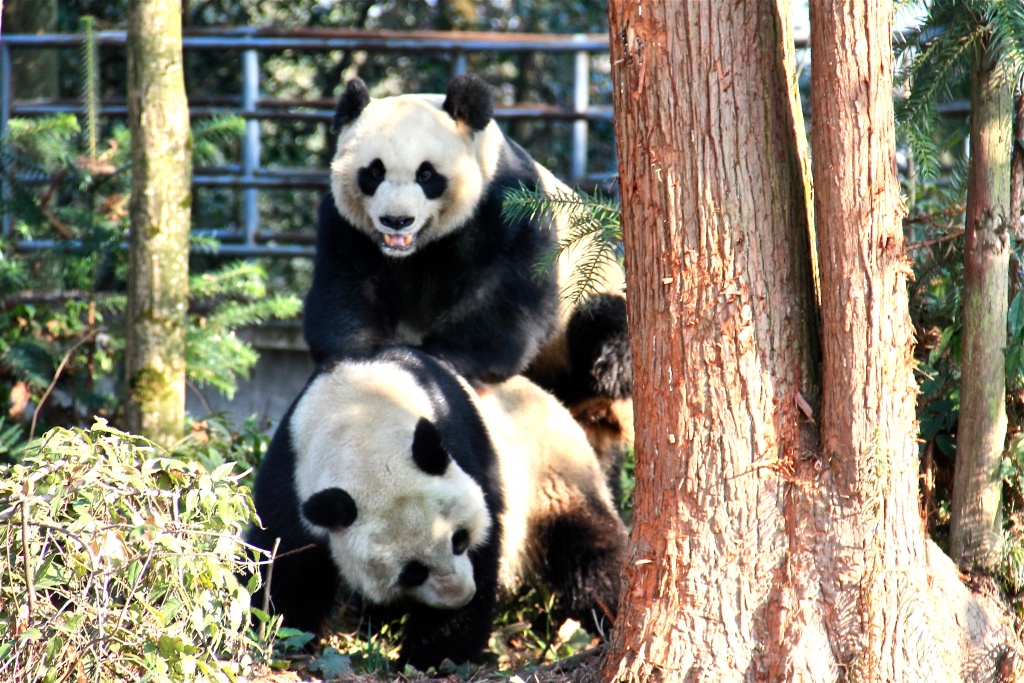
Giant pandas Dai Li (male) and Hai Zi (female) breeding at the China Conservation and Research Center for the Giant Panda (CCRCGP) Bifengxia base in Sichuan, China.
The Findings: The crux of the paper is Figure 3 and Table 3. Successful mating attempts rose from 0% when neither individual showed a preference, to ~50% when either female or male preferred each other but this preference was not reciprocated by the other part of the mating pair, to more than 80% when both preferred each other.
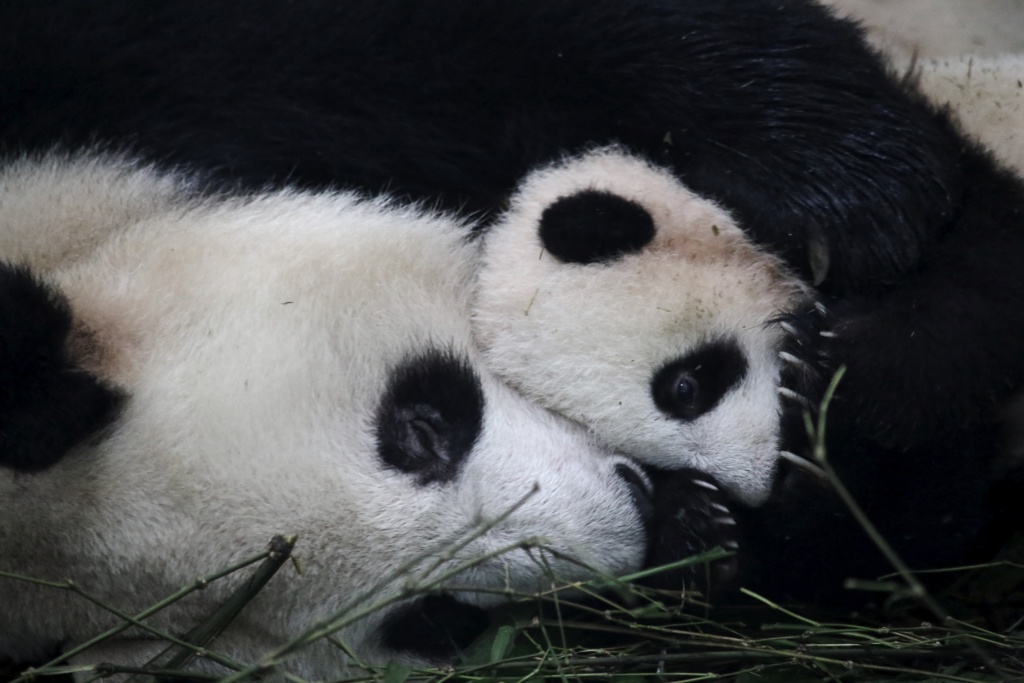
Giant panda mother, Xi Xi, cuddling with her 2015 cub at the China Conservation and Research Center for the Giant Panda (CCRCGP) Bifengxia base in Sichuan, China.
Why it’s important: Our findings suggests that incorporating mate choice into conservation breeding programs could make a huge difference for the success of many endangered species breeding programs, increasing cost-effectiveness and overall success. Conservation breeding programs offer a boost in population numbers that cannot be obtained by solely safe-guarding the known wild populations. In addition, conservation breeding programs act as a fail-safe against extinction and a reservoir for wild populations, providing animals for reintroduction to bolster the wild populations. Findings from this study could ultimately help increase the number of individuals in the giant panda population and the number of individuals available for reintroduction.
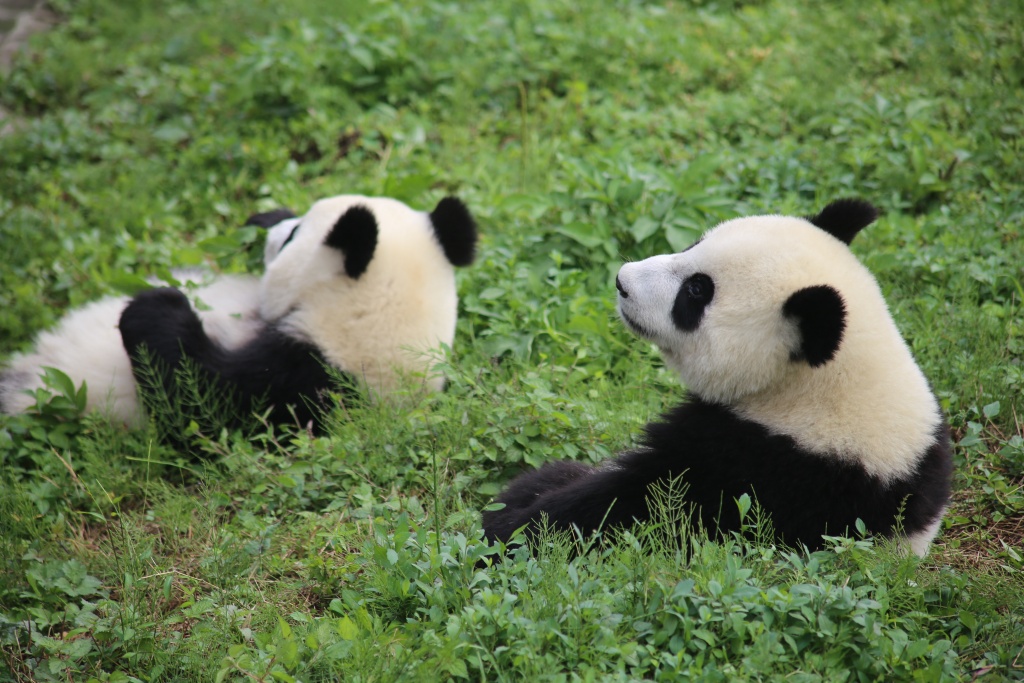
Giant panda cubs taking a break from playing and relaxing in the grass in the panda kindergarten at the China Conservation and Research Center for the Giant Panda (CCRCGP) Bifengxia base in Sichuan, China.
Ultimately, our research is all about finding out ways to help this incredibly charismatic species that the world has embraced as the face of conservation. Please help our cause by donating here!
-Meg
(I know that’s a shameless plug at the end there but . . . really – it’s because of all of you that we’re able to make these ground breaking discoveries!)

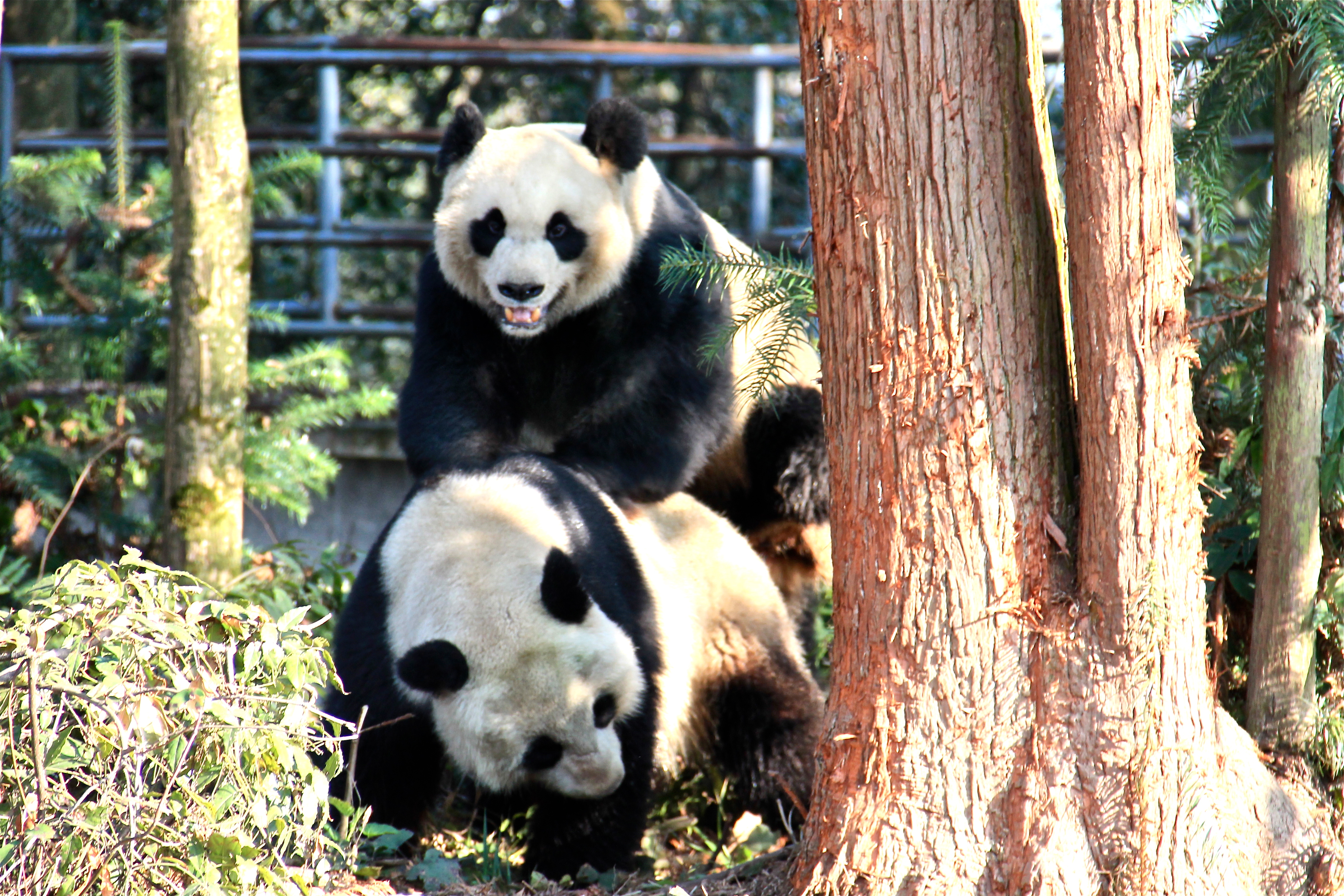
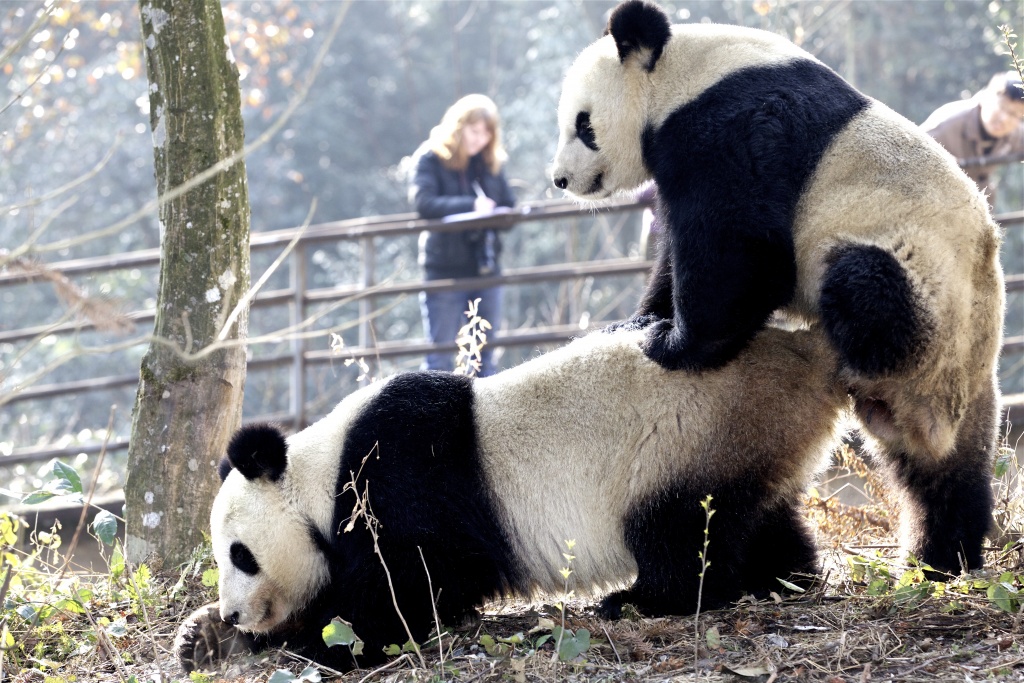
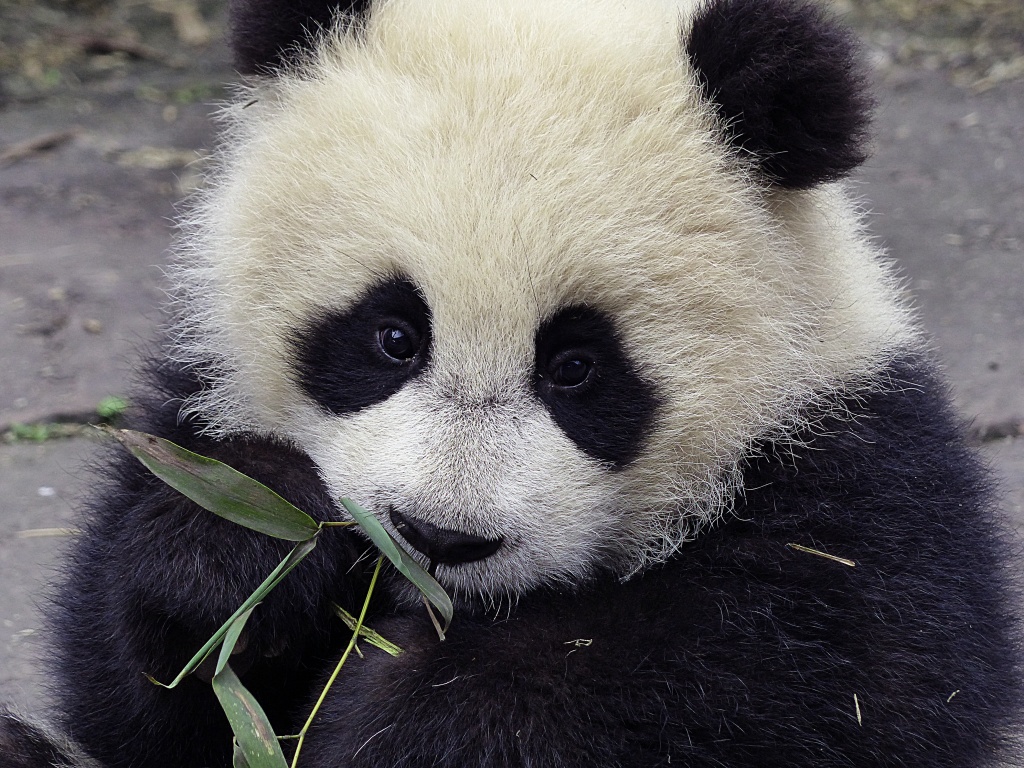
Congratulations, Meg!!!
Thank you so much! We’re so excited! Also, your package is in the mail – Thank you for supporting us!
Congratulations Meghan. Here is my article including informations about wild pandas :
http://www.pandas.fr/tout-comme-leurs-congeneres-sauvages-les-pandas-captifs-se-reproduisent-mieux-s-ils-choisissent-leur-partenaire.html
I look forward to knowing more about your next researches.